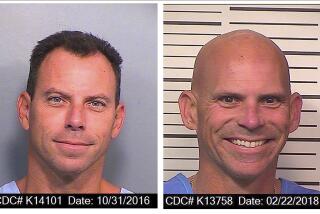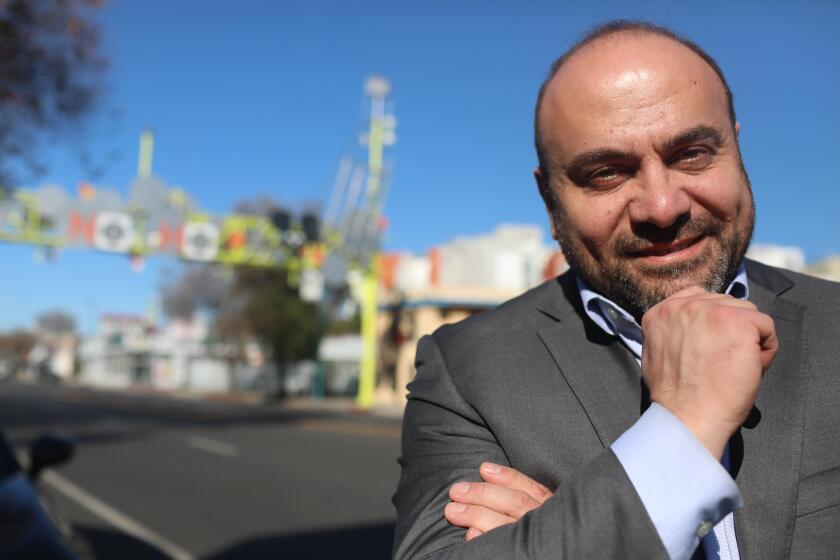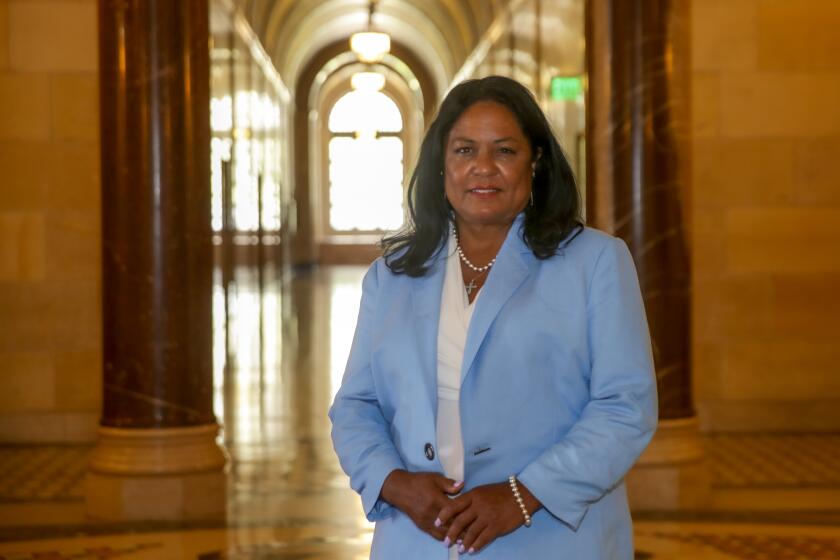Editorial: What needs to happen next for homeless people in L.A. County

A year ago, Los Angeles city and county officials put aside their traditional rivalries and proposed sweeping, coordinated plans to tackle homelessness, perhaps the most challenging problem they currently face. Now, those plans are officially in place and city voters have approved $1.2 billion in bonds to finance the construction of 10,000 units of supportive housing for the region’s most vulnerable people. In March, county voters will decide whether to approve a quarter-cent sales tax hike to fund a dramatic increase in services for the homeless.
It took far too long, but finally the county — home to nearly 47,000 homeless people — and the city (where an estimated 28,000 of them live) have marshaled the political will and capital to address this seemingly intractable problem on a scale never before attempted here.
That’s an enormous step forward. Now, here are some things that need to happen in the months ahead:
Once homeless people are housed in new permanent supportive housing units, the city should monitor whether they stay housed and for how long.
— The county Board of Supervisors must pull out all the stops to explain to voters why the proposed quarter-cent sales tax hike is necessary. In the months ahead, more details will become available about how the money will be spent, but the bottom line, according to county officials, is that for these ambitious plans to move forward, they will need an additional $450 million a year to provide mental health services, substance abuse treatment, rental subsidies and myriad other services. Let’s hear the supervisors’ best case and, if it makes sense, let’s hope they can inspire people to vote for the package in the March election.
— City and county officials, nonprofit service providers and advocates for homeless people — all of whom will likely face opposition as their plans move forward — must put extra effort into collaborating with residents and neighborhood groups. Developers and service providers, in particular, must work closely with skeptical communities, involving residents and listening to their concerns as well as their suggestions. It’s understandable that people who see encampments spreading all around the city worry that if homeless housing is sited in their own neighborhoods it will only make the problem that much more visible and intrusive. They need to be shown that housing is the only way to make things better.
Last fall, L.A. councilman Mike Bonin, who represents much of the Westside, took some of his constituents from Venice on a tour of existing permanent supportive housing developments. That didn’t allay all his constituents’ concerns, but it did show them that housing for the homeless can be attractive and well-managed and that its residents include people grateful for a fresh start and enthusiastic about the new lives they have launched. More such tours would be a good idea.
— It will take several years before the thousands of units of permanent supportive housing become available. In the meantime, the city and the county need more temporary or interim housing for homeless people. That’s difficult, too — finding affordable apartments or motel rooms or suitable shelter beds in an expensive region with a low vacancy rate.
— The city needs to set up a safe parking program which would designate certain parking lots as safe havens where some of the thousands of people living in cars and campers could park overnight and sleep and have access to bathrooms and other necessities. Bonin introduced a motion over a year ago to do just that, but, so far, it’s gone nowhere. Meanwhile, the council passed a new ordinance prohibiting living in vehicles overnight near homes, parks, and schools — but allowing it in some commercial or industrial areas overnight. The city council should authorize, at least, a pilot program to test out safe parking in available off-street lots. And it should help non-profit groups, like churches and temples, who want to offer parking in their lots.
— The city has promised to set up an oversight committee to review housing projects before they go to the council for approval. That’s good. But it is also critically important that the city and the county develop an agreed-upon protocol for tracking success — or lack of it — and that they keep a close eye on whether the programs are achieving what what they are supposed to achieve, at the expected pace and cost. For example, once homeless people are housed in new permanent supportive housing units, the city should monitor whether they stay housed and for how long. The city should track residents for five years and longer.
Let’s evaluate whether we are doing the right things — and if we are not, let’s make sure we have the data and flexibility to make the necessary adjustments.
Follow the Opinion section on Twitter @latimesopinion and Facebook
More to Read
A cure for the common opinion
Get thought-provoking perspectives with our weekly newsletter.
You may occasionally receive promotional content from the Los Angeles Times.










